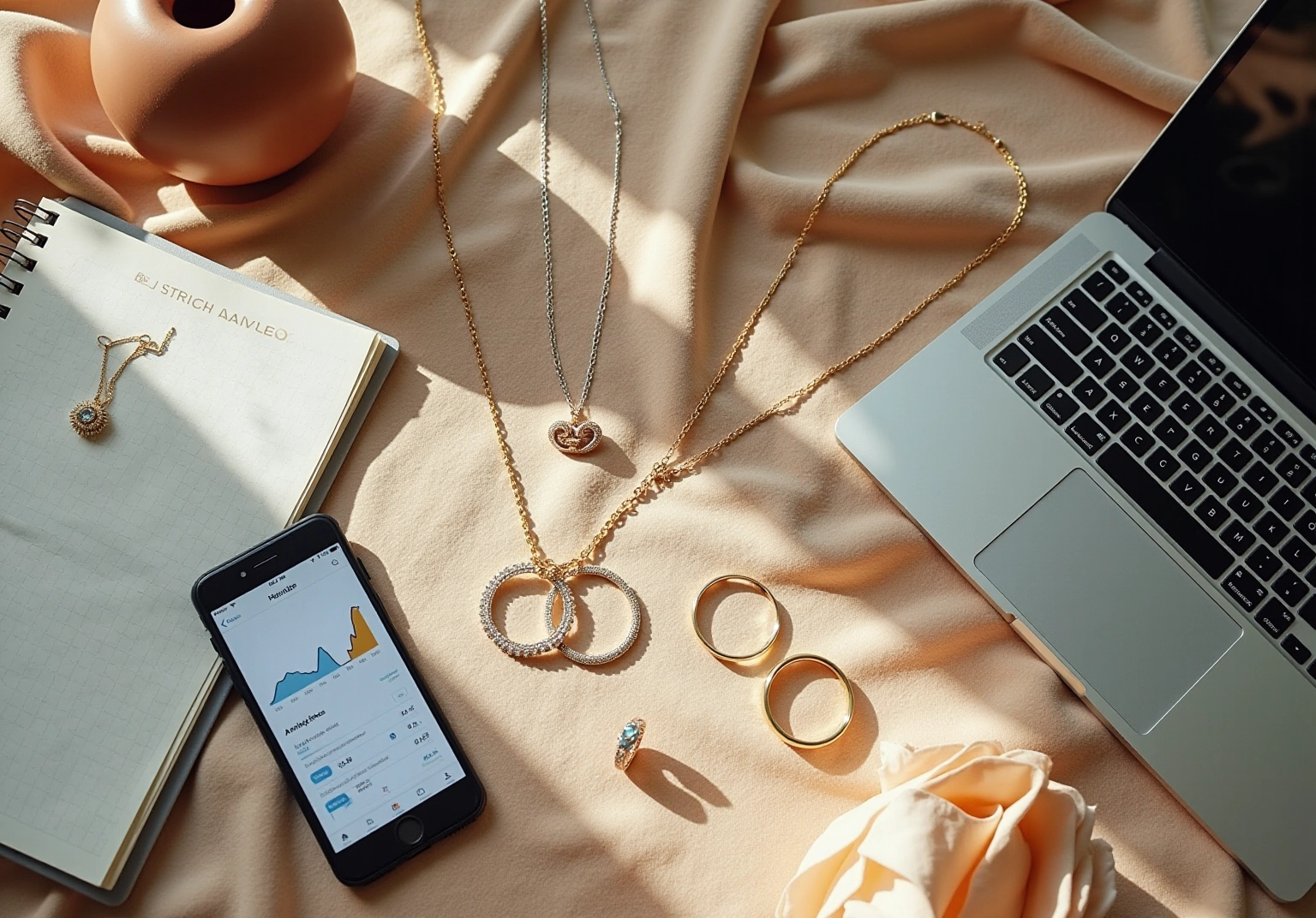
Overview
The title "10 Effective Strategies for Jewelry Sale Advertisement Success" poses a critical inquiry into the essential methods that elevate the effectiveness of jewelry advertisements. This article delineates several strategies, including:
- The application of data-driven Conversion Rate Optimization (CRO) techniques
- The utilization of Instagram Stories to create engaging visuals
- The implementation of loyalty programs
Collectively, these approaches significantly enhance visibility, foster engagement, and ultimately drive sales for jewelry brands.
Introduction
Crafting a successful jewelry sale advertisement transcends the mere showcasing of sparkling pieces; it demands a strategic approach that resonates with potential buyers. In an increasingly competitive jewelry market, businesses must leverage innovative techniques to capture attention and drive sales. This article explores ten effective strategies designed to elevate jewelry advertising efforts, from harnessing data-driven insights to engaging customers through social media and personalized campaigns.
How can brands ensure they stand out in a crowded marketplace while fostering lasting relationships with their clients?
Parah Group: Implement Data-Driven CRO Strategies for Effective Jewelry Ads
To effectively promote jewelry, companies must embrace data-driven Conversion Rate Optimization (CRO) strategies that prioritize the analysis of user behavior. By leveraging tools such as Google Analytics and heatmaps from VWO Insights, businesses can gain valuable insights into how potential customers engage with their advertisements. For example, by monitoring visitor engagement through session recordings, companies can pinpoint which ads deliver the highest performance. This insight enables them to allocate budgets more efficiently, ensuring that receive enhanced visibility.
Furthermore, the implementation of A/B testing across various ad formats and messaging is essential for refining campaigns. This approach not only aids in identifying which elements resonate most with target audiences but also contributes to improved conversion rates. A notable case is Parah Group, which achieved a 36% increase in ROI on advertisements for their clients through [effective A/B testing techniques](http://parahgroup.com/blogs/7-benefits-of-scroll-websites-for-dtc-brand-success). Additionally, a decorative item label that optimized its advertising text and visuals via A/B testing witnessed a significant boost in client engagement and sales. By continuously analyzing user behavior and fine-tuning advertising strategies, companies can enhance their overall promotional effectiveness, ultimately driving increased sales and fostering client loyalty.
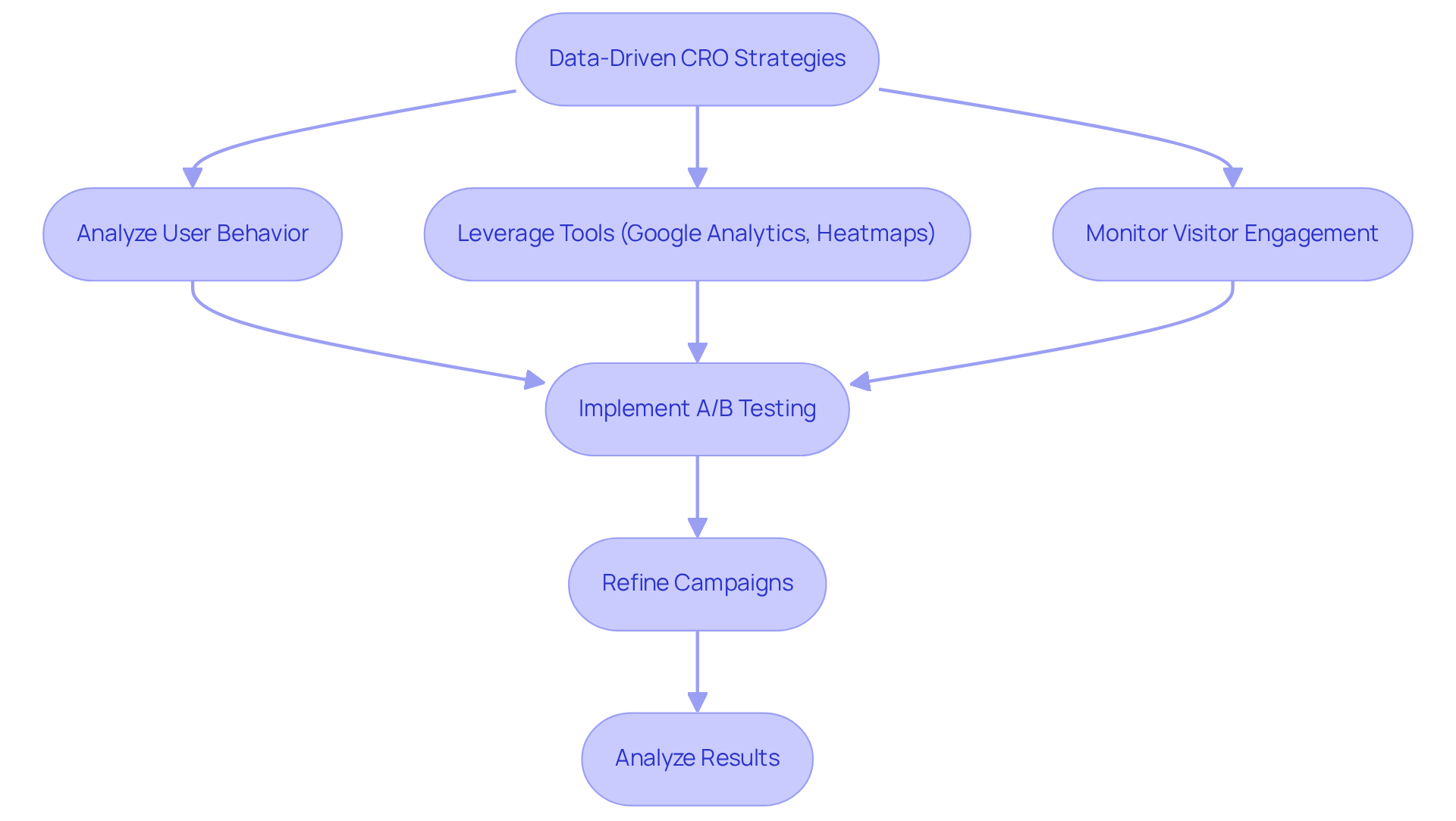
Instagram Stories: Create Engaging Visual Promotions for Jewelry Sales
Utilizing Instagram Stories for jewelry promotions empowers companies to craft captivating, ephemeral content that seizes attention. By showcasing new collections, providing behind-the-scenes glimpses, or sharing customer testimonials through striking images and videos, businesses can weave a dynamic narrative.
Incorporating interactive elements, such as polls or questions, not only enhances viewer participation but also fosters a sense of community around the brand. Consistently sharing Stories enables accessory companies to create effective jewelry sale advertisements that maintain visibility, keeping their audience informed about promotions and new products, ultimately driving traffic to their online shops.
[According to Parah Group](https://parahgroup.com), companies that effectively implement visual content strategies can witness a 36% increase in ROI on advertisements. As social media marketing expert Krista Neher asserts, 'Building credibility online in a compelling way is essential for engaging your audience.'
This approach aligns with the growing trend of employing visual storytelling to enhance engagement and consumer interest in the accessories market, particularly in a competitive landscape where are paramount.
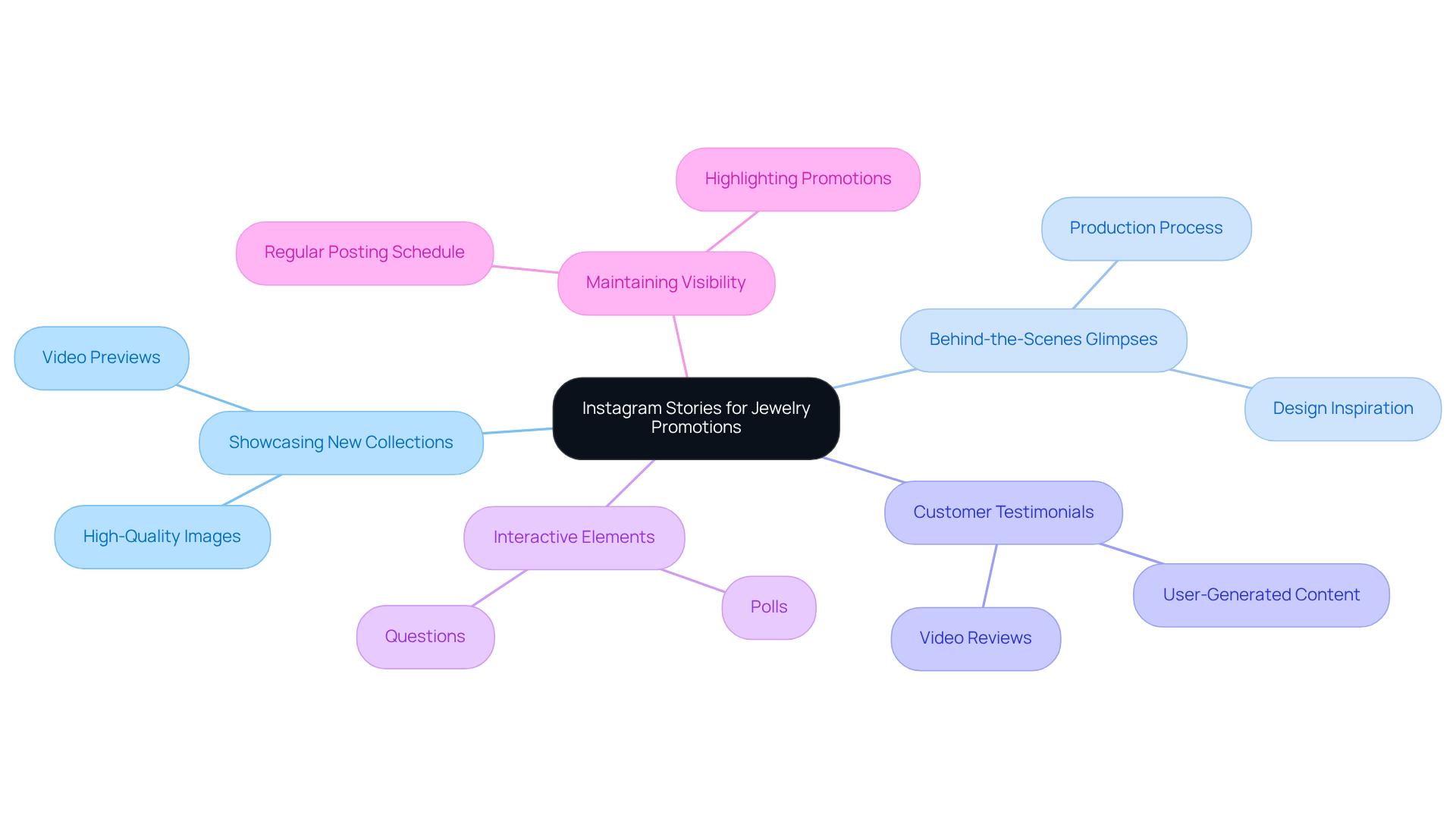
Email Campaigns: Send Personalized Offers to Boost Jewelry Sales
Email marketing stands as one of the most effective channels for jewelry companies to engage with their clients, especially when it features a jewelry sale advertisement alongside adept Conversion Rate Optimization (CRO) strategies. By segmenting their email lists based on consumer behavior and preferences, companies can deliver personalized offers that resonate with individual recipients.
For example, extending exclusive discounts on birthdays or sending reminders for items left in shopping carts can significantly boost conversions. Furthermore, presenting new collections or seasonal promotions through visually compelling newsletters, including a jewelry sale advertisement, not only keeps customers engaged but also drives traffic to the website.
This strategic approach not only enhances customer relationships but also .

Influencer Partnerships: Leverage Social Proof to Promote Jewelry Collections
Collaborating with influencers can dramatically elevate a collection's visibility and trustworthiness. Influencers cultivate dedicated audiences that depend on their recommendations, making them ideal advocates for accessory collections. Brands must prioritize influencers whose aesthetics align with their own and resonate with their target demographic. By providing influencers with unique items to showcase, companies can effectively harness social proof to attract new clients and boost sales. Notably, successful accessory brands have leveraged influencer-hosted giveaways to generate excitement and foster engagement, creating significant buzz around their collections. This strategy not only but also encourages prospective clients to explore the products, ultimately driving conversions.
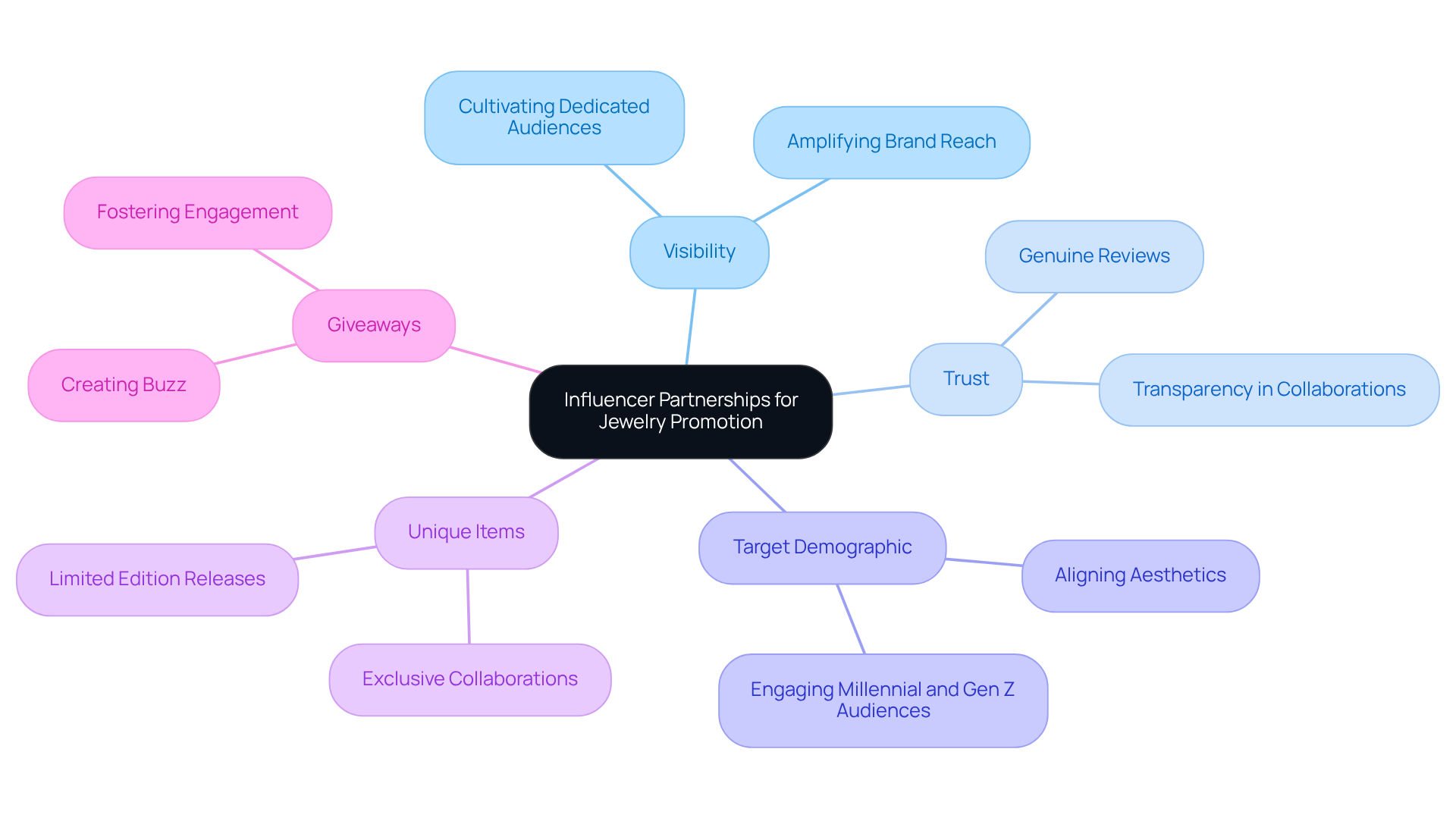
User-Generated Content: Showcase Customer Photos to Drive Jewelry Sales
Harnessing the power of user-generated content (UGC) by encouraging clients to share images of themselves adorned with jewelry not only cultivates a vibrant community but also enhances authenticity. Jewelry companies can drive this engagement by prominently featuring client photos on their social media platforms and websites, showcasing real-life applications of their products. This strategy not only with potential buyers but also motivates existing clients to interact more with the brand. By developing a unique hashtag for clients to use, companies can effortlessly organize and disseminate this content, thereby amplifying their marketing efforts.
The impact of client photos on jewelry sales is substantial; research indicates that UGC can lead to a 29% increase in web conversions and a 30% improvement in purchase intent. As noted by InBeat, "UGC results in 29% higher web conversions than campaigns without it." For instance, brands that effectively showcase client images often experience elevated engagement rates, with social media campaigns achieving 50% more interactions compared to those that do not incorporate UGC. Flockler highlights that "Instagram posts with UGC get 70% more engagement," underscoring the effectiveness of UGC in driving social media engagement. Successful brands have integrated customer images into their advertising, resulting in a more relatable and trustworthy identity.
Furthermore, featuring UGC not only boosts engagement but also proves to be cost-effective. Ads featuring customer-generated content achieve four times higher click-through rates and cost 50% less per click compared to traditional advertising. Shopify corroborates this, stating, "Ads with UGC have 4 times the click-through rates and cost 50% less per click," reinforcing the argument with credible data. By prioritizing UGC, accessory brands can craft a compelling narrative that resonates with consumers, ultimately driving sales and fostering long-term loyalty.
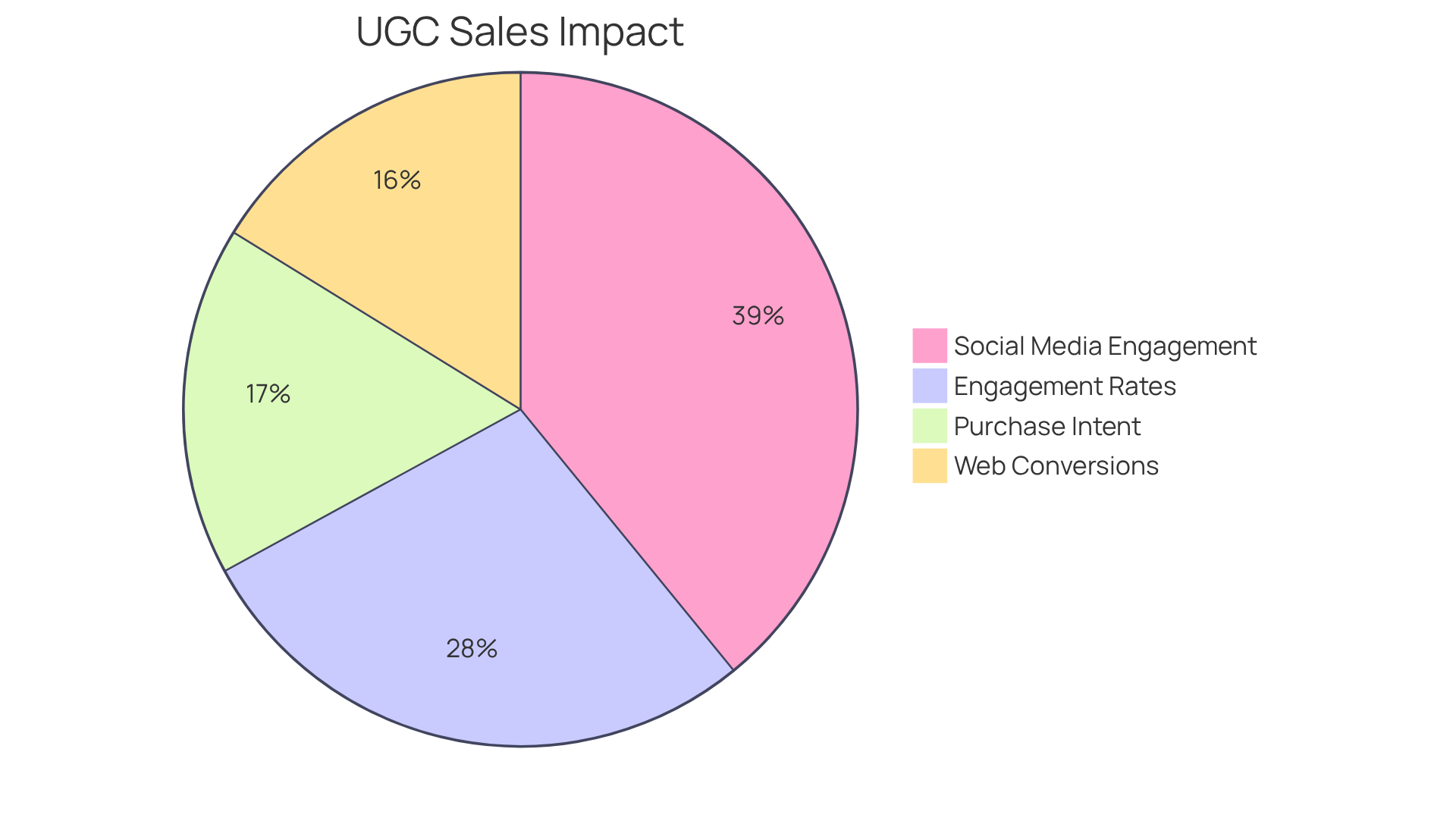
Seasonal Promotions: Launch Timely Sales Events for Jewelry Collections
Implementing seasonal promotions serves as a powerful strategy to elevate jewelry sales, which can be effectively showcased in a jewelry sale advertisement by synchronizing marketing initiatives with consumer buying behaviors. Brands must strategically plan their promotions around significant holidays such as:
- Valentine's Day
- Mother's Day
- The festive season
Using a jewelry sale advertisement to offer enticing discounts or exclusive collections tailored to these occasions is essential. Notably, stands out as a crucial occasion for a jewelry sale advertisement, second only to Black Friday and the holidays, providing an exceptional opportunity for retailers to attract new clientele.
By generating a sense of urgency through limited-time offers in a jewelry sale advertisement, retailers can effectively encourage individuals to finalize their purchases before the promotion concludes. Furthermore, leveraging social media and email marketing campaigns to highlight the jewelry sale advertisement not only boosts visibility but also drives traffic to the brand's website, thereby enhancing overall engagement and sales performance.
Successful jewelers understand that ongoing engagement with clients throughout the year is essential, adjusting their approaches to maintain significance and enthusiasm around their offerings. As Lynn Meng observes, holidays represent some of the most lucrative opportunities for retailers, making it imperative to analyze sales data and client feedback after events like Mother's Day to refine future marketing strategies, including a jewelry sale advertisement.

Limited-Time Offers: Drive Urgency with Exclusive Jewelry Discounts
[Limited-time offers](https://smartinsights.com/digital-marketing-strategy/psychology-urgency-9-ways-drive-conversions) serve as a powerful strategy to create urgency and drive immediate purchases. By presenting special discounts available for a limited duration, accessory companies can effectively leverage the fear of missing out (FOMO) that many consumers experience. This strategy can be implemented through:
- Countdown timers on websites
- Engaging social media posts
- Targeted email campaigns
Furthermore, emphasizing the exclusivity of the offer significantly enhances the likelihood of customers acting swiftly, ultimately leading to increased sales and higher conversion rates.
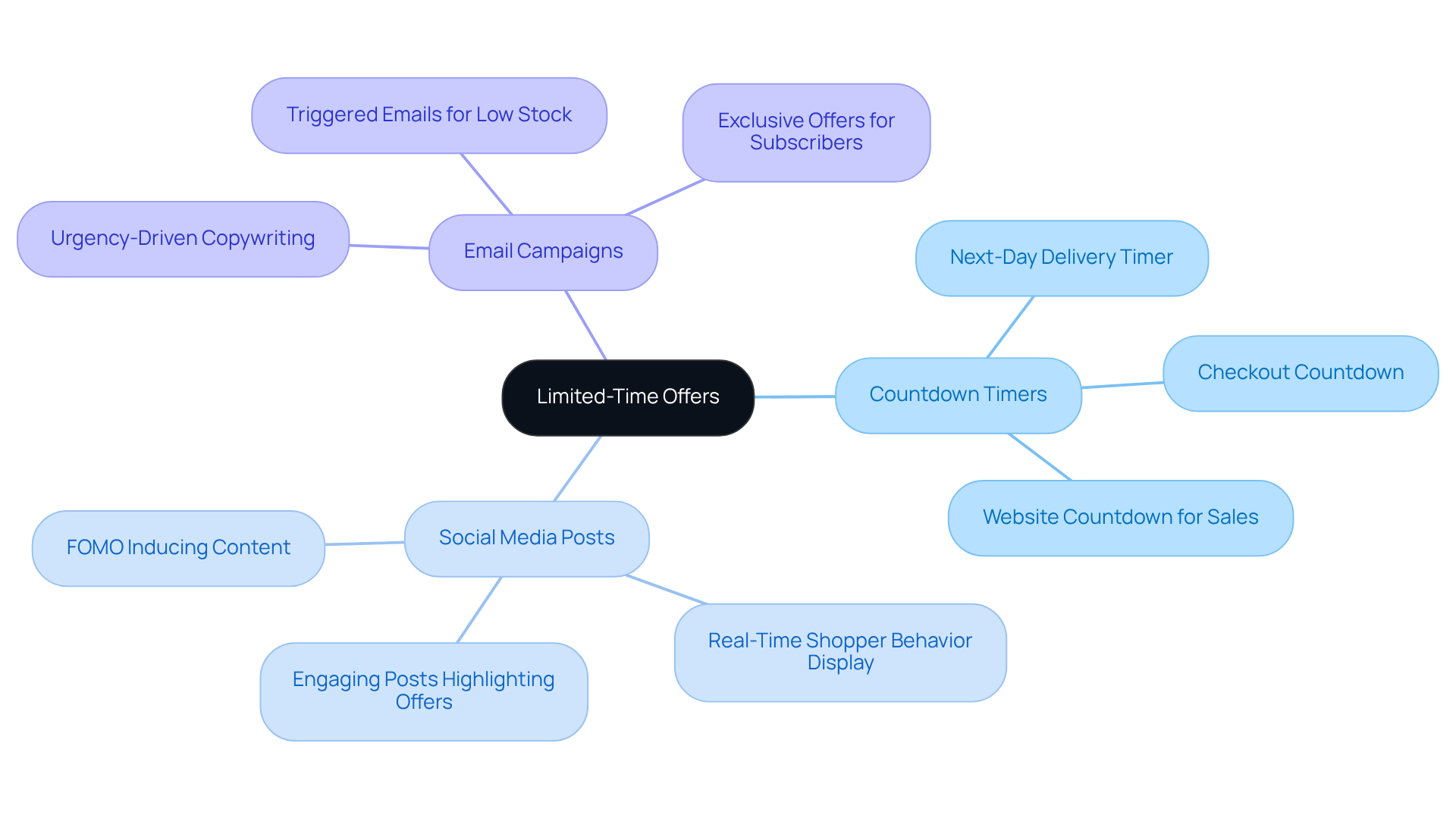
Virtual Events: Host Webinars to Educate and Engage Jewelry Buyers
Hosting virtual events, such as webinars or live Q&A sessions, is a powerful strategy for accessory companies aiming to connect with their audience and showcase their expertise. These sessions can delve into various topics, including accessory care, styling tips, and emerging industry trends. By delivering valuable insights, brands not only enhance their credibility but also foster trust among prospective clients.
Moreover, integrating exclusive discounts or promotions during these events, such as a jewelry sale advertisement, can effectively incentivize attendees to make purchases, thereby driving sales. Industry leaders assert that educational webinars significantly boost customer engagement, positioning them as a vital element of contemporary marketing strategies within the industry.
For example, Michael Burke, chairman of Louis Vuitton, highlights fine jewelry as a high-growth category, emphasizing the necessity of innovative marketing approaches like webinars. Furthermore, statistics reveal that 67% of hybrid event speakers found polls to be a helpful tool for connecting with audiences, underscoring the importance of interactive elements in engaging participants.
Successful examples from the sector illustrate how these initiatives can lead to heightened customer loyalty and improved conversion rates, ultimately transforming casual viewers into dedicated buyers. To implement webinars effectively, companies must prioritize the creation of that resonates with their audience and consider leveraging insights from industry leaders to enhance their presentations.
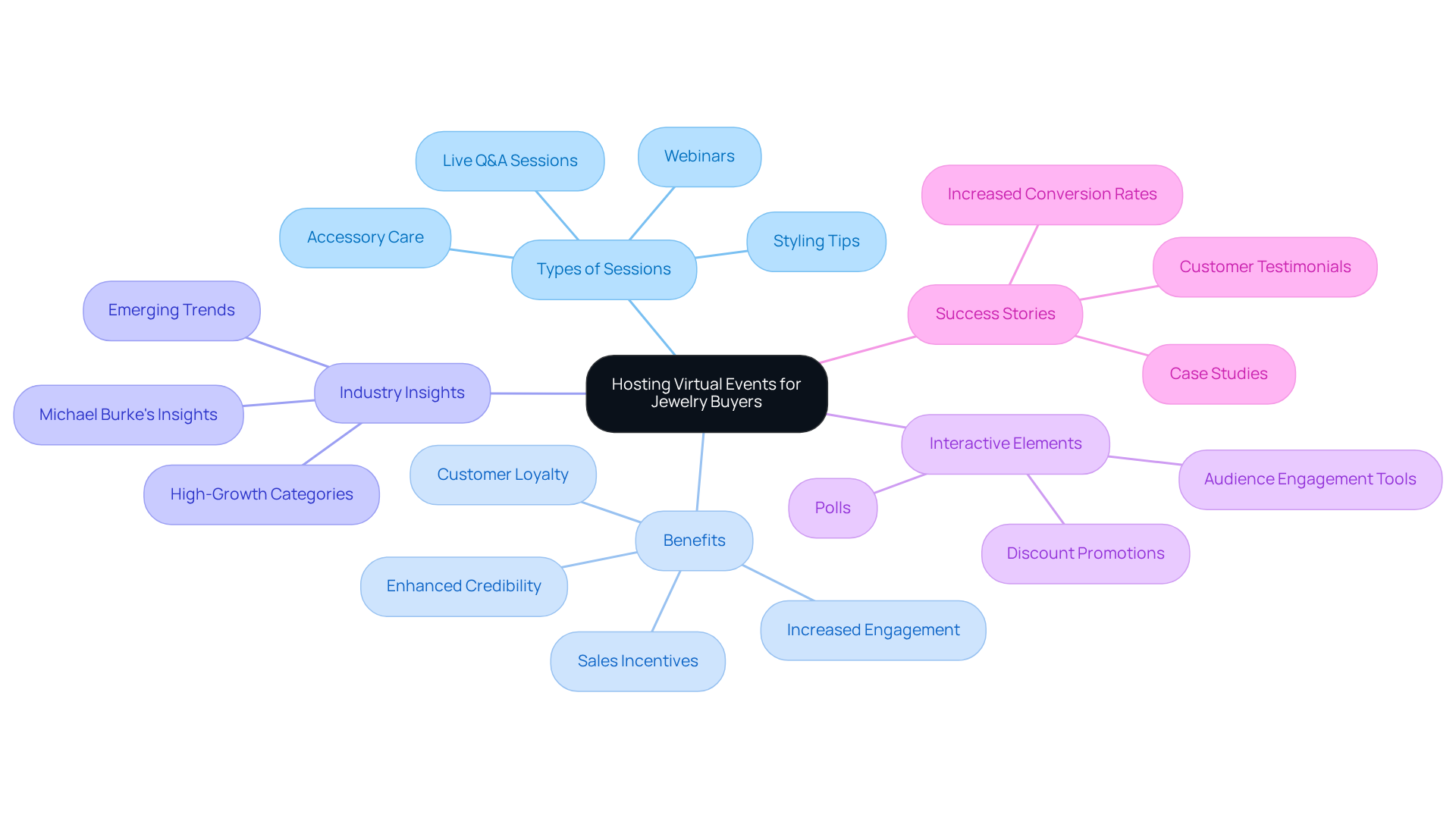
Retargeting Ads: Re-Engage Visitors to Increase Jewelry Sales
Retargeting ads serve as a formidable strategy for re-engaging visitors who have previously shown interest in a jewelry line, especially through a jewelry sale advertisement, but did not finalize their purchase. By delivering tailored ads across various platforms, brands can effectively remind these users of the products they explored, prompting them to return and complete their transactions.
Successful retargeting tactics include:
- Using a jewelry sale advertisement to offer exclusive discounts
- Highlighting complementary products
These tactics can significantly entice customers back to the site. This method not only enhances conversion rates but also maximizes the return on advertising expenditure, making it an essential component of any marketing strategy for accessories.
For instance, companies that have executed targeted retargeting campaigns have reported substantial increases in sales, illustrating the concrete advantages of this strategy in the competitive accessories market. According to industry insights, a data-driven approach that leverages psychological triggers can further amplify the effectiveness of retargeting ads, ensuring they resonate with potential customers.
Furthermore, addressing challenges such as heavy traffic and shipping costs through strategic retargeting can provide accessory companies with a competitive edge.
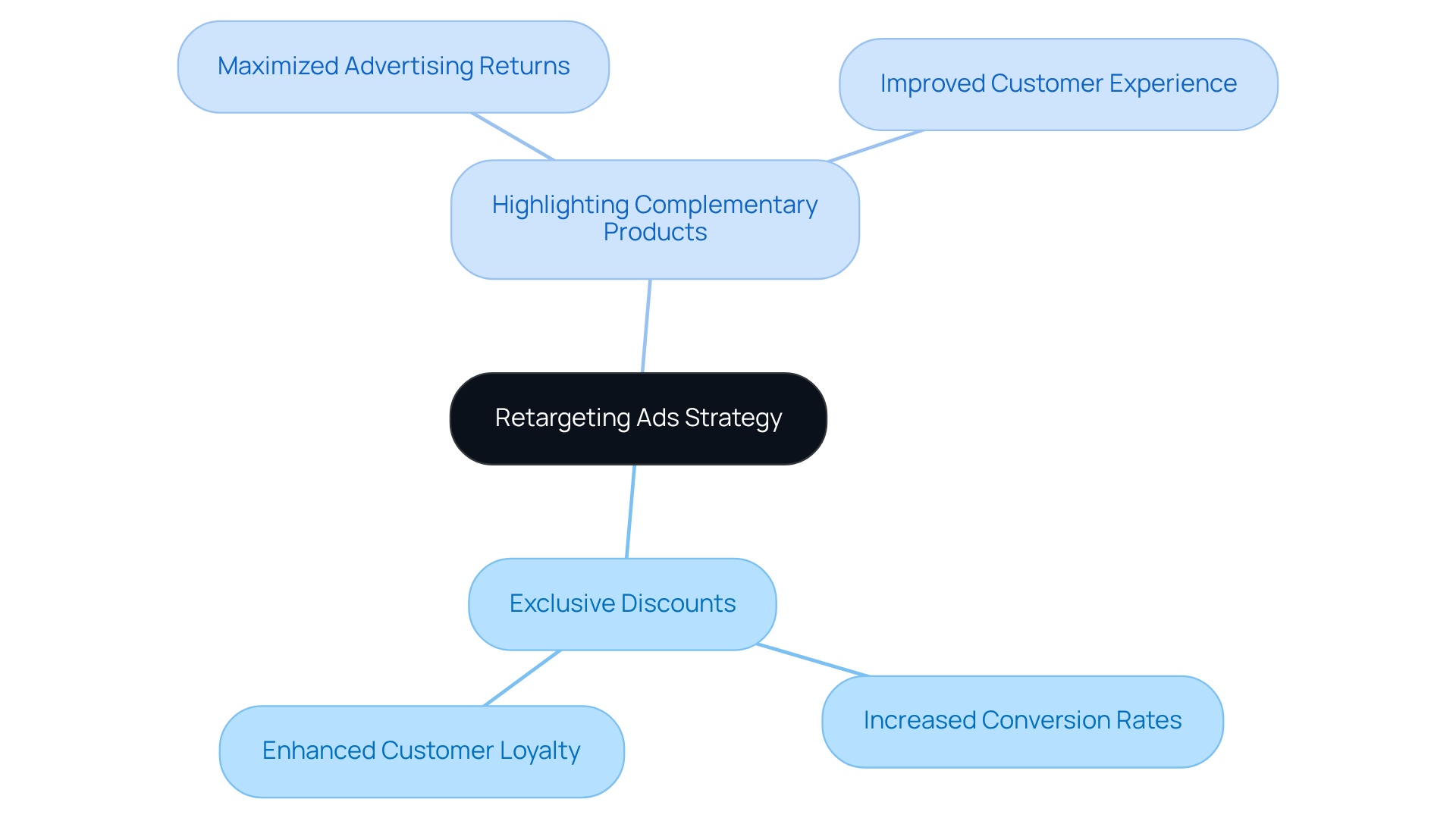
Loyalty Programs: Reward Repeat Customers to Boost Jewelry Sales
Establishing a loyalty program is a powerful strategy for jewelry businesses aiming to significantly boost repeat purchases. By offering incentives such as points for each transaction, exclusive discounts, and priority access to new collections, companies create a sense of community and appreciation among their patrons. This approach not only drives repeat business but also enhances and loyalty to the brand. Research indicates that 85% of consumers are more likely to continue purchasing from companies with loyalty programs, underscoring the importance of these initiatives in today’s competitive landscape.
Moreover, promoting the loyalty program through targeted email campaigns and engaging social media content can attract new clientele and encourage them to join, ultimately driving sales and fostering long-term relationships. It is noteworthy that 80% of businesses continue to rely on email marketing for client retention, highlighting the effectiveness of these channels. Additionally, loyalty leaders experience revenue growth at a rate 2.5 times faster than their competitors, showcasing the long-term value of investing in such initiatives.
However, brands must also be aware of potential challenges. A significant 45% of consumers express dissatisfaction with the time required to earn rewards, which could adversely affect customer satisfaction. Addressing this concern is crucial for maintaining a successful loyalty program.

Conclusion
Implementing effective strategies for jewelry sale advertisements is crucial for businesses aiming to enhance visibility and drive sales. By focusing on data-driven approaches, engaging social media content, personalized email campaigns, and leveraging influencer partnerships, companies can create compelling marketing initiatives that resonate with their target audience. These strategies not only boost immediate sales but also foster long-term customer loyalty and brand recognition.
Key insights from the article underscore the significance of utilizing tools such as:
- A/B testing
- User-generated content
to refine advertising efforts. Seasonal promotions and limited-time offers create a sense of urgency that encourages purchases, while retargeting ads effectively re-engage potential customers who have previously shown interest. Furthermore, loyalty programs can significantly enhance repeat business by rewarding customers for their continued patronage.
Ultimately, the jewelry market is highly competitive, making it essential for brands to adopt innovative marketing strategies that resonate with consumers. By embracing these effective advertising techniques, jewelry businesses can not only increase their sales but also cultivate a loyal customer base that values their offerings. The time to implement these strategies is now, as they hold the potential to transform casual shoppers into dedicated clients, ensuring sustained success in the ever-evolving jewelry industry.
Frequently Asked Questions
What are data-driven CRO strategies for jewelry ads?
Data-driven Conversion Rate Optimization (CRO) strategies involve analyzing user behavior to improve the effectiveness of jewelry advertisements. Tools like Google Analytics and heatmaps help businesses understand customer engagement, allowing them to identify high-performing ads and allocate budgets more efficiently.
How does A/B testing contribute to jewelry advertising?
A/B testing helps refine advertising campaigns by comparing different ad formats and messaging. This method identifies which elements resonate with target audiences, leading to improved conversion rates. For instance, Parah Group achieved a 36% increase in ROI for their clients through effective A/B testing.
What role do Instagram Stories play in promoting jewelry?
Instagram Stories allow jewelry companies to create engaging, ephemeral content that captures attention. By showcasing new collections, behind-the-scenes glimpses, and customer testimonials, brands can enhance viewer participation and maintain visibility, driving traffic to their online shops.
How can companies increase ROI using visual content strategies?
Companies that implement effective visual content strategies, such as those used in Instagram promotions, can see up to a 36% increase in ROI on advertisements. This approach leverages compelling visuals to engage audiences and enhance credibility online.
What is the importance of email marketing for jewelry sales?
Email marketing is a highly effective channel for engaging clients in the jewelry sector. By segmenting email lists based on consumer behavior and preferences, companies can send personalized offers, such as exclusive discounts or reminders for abandoned carts, which significantly boosts conversions.
How can personalized offers enhance customer relationships in jewelry marketing?
Personalized offers, like birthday discounts or tailored promotions, enhance customer relationships by showing that companies understand their clients' preferences. This strategic approach keeps customers engaged and maximizes the potential for increased sales through targeted communication.
FAQs











